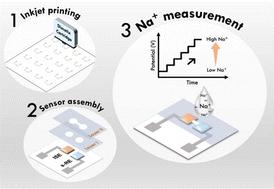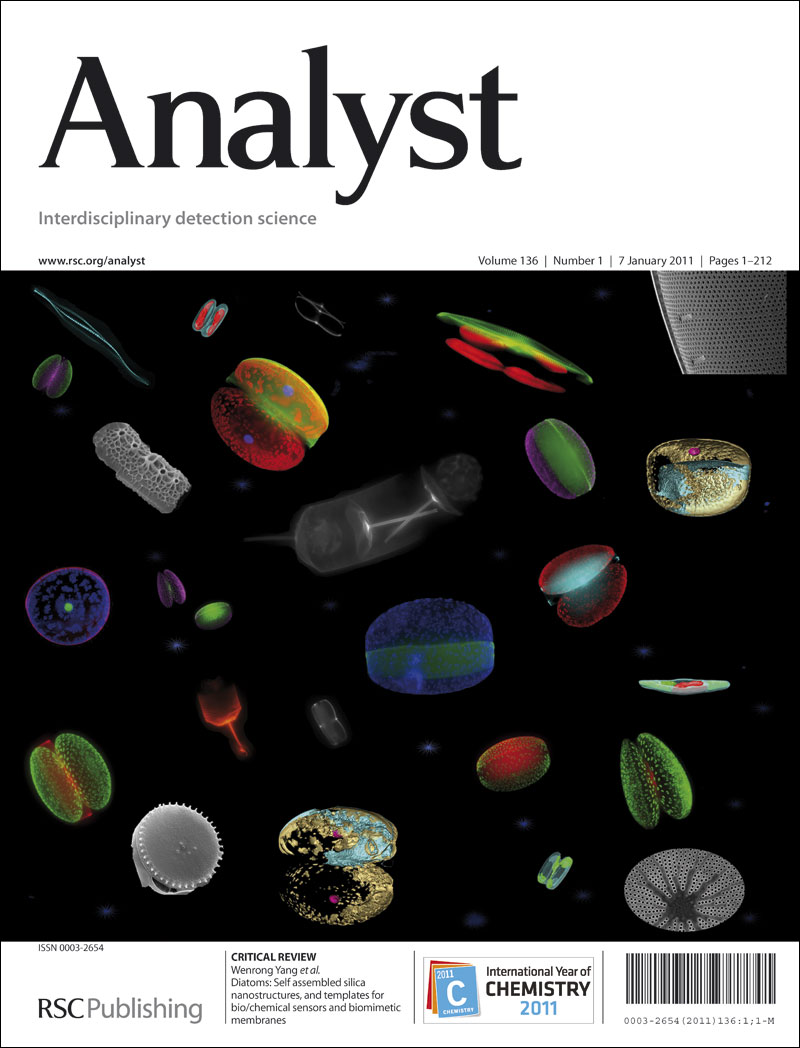Polymeric hydrogel integrated paper-based potentiometric ion-sensing device for the determination of sodium ions in human urine
IF 3.6
3区 化学
Q2 CHEMISTRY, ANALYTICAL
引用次数: 0
Abstract
A paper-based potentiometric sensor integrated with a polymeric hydrogel has been developed for sodium ion (Na+) determination in human urine. The construction of an all-solid-state ion selective electrode (s-ISE) and an all-solid-state reference electrode (s-RE) on a photo paper substrate was achieved using an inkjet printing method. For s-ISE fabrication, carbon nanotubes (CNTs) and gold nanoparticles (AuNPs) were printed on the substrate as a nanocomposite solid contact. A polymeric hydrogel containing lithium acetate (CH3COOLi) was then prepared and used as an intermediate layer to improve the adhesion between the ion selective membrane (ISM) and the AuNP/CNT solid contact, leading to enhanced detection sensitivity. The printed s-RE consisted of a pseudo silver/silver chloride electrode (p-Ag/AgCl) coated with a polymeric hydrogel containing KCl to improve the potential stability of the sensor. Under the optimal conditions, the hydrogel-integrated paper-based potentiometric sensor provided a response toward Na+ over a linear range of 10−7 M to 1 M with a near Nernstian slope of 56.42 ± 0.68 mV per decade. This sensor exhibited fast response, good sensitivity, and reasonable selectivity for Na+ measurement. Furthermore, the developed sensor was effectively applied for the detection of Na+ in urine samples with high accuracy. The presented work can be considered as a good addition to the growing field of potentiometric analytical platforms suitable for large-scale production using inkjet printing technology.

求助全文
约1分钟内获得全文
求助全文
来源期刊

Analyst
化学-分析化学
CiteScore
7.80
自引率
4.80%
发文量
636
审稿时长
1.9 months
期刊介绍:
"Analyst" journal is the home of premier fundamental discoveries, inventions and applications in the analytical and bioanalytical sciences.
 求助内容:
求助内容: 应助结果提醒方式:
应助结果提醒方式:


